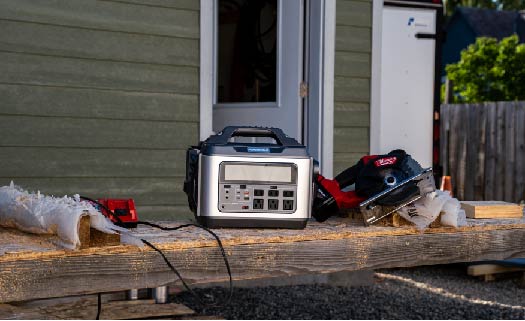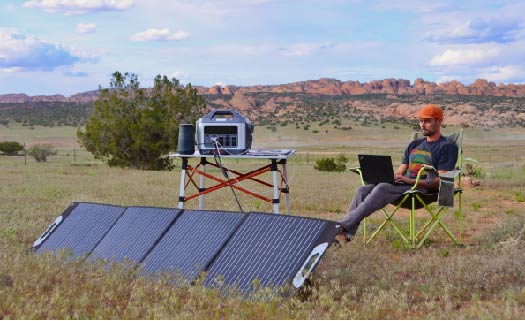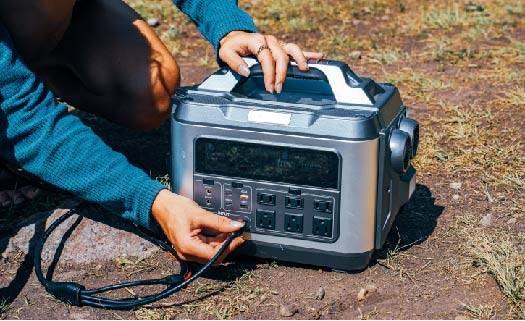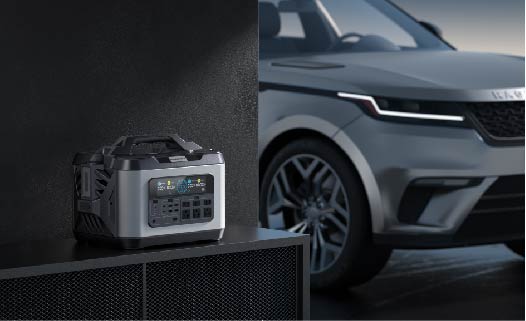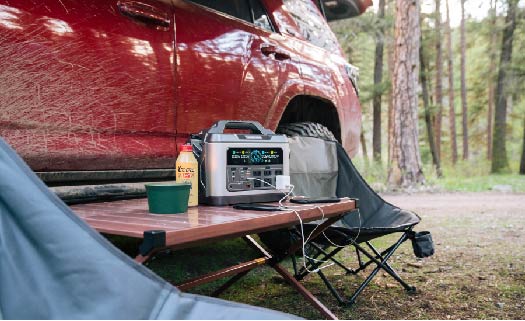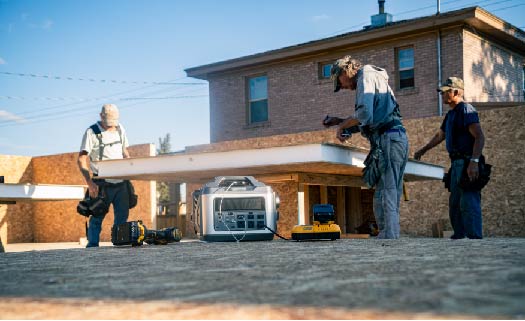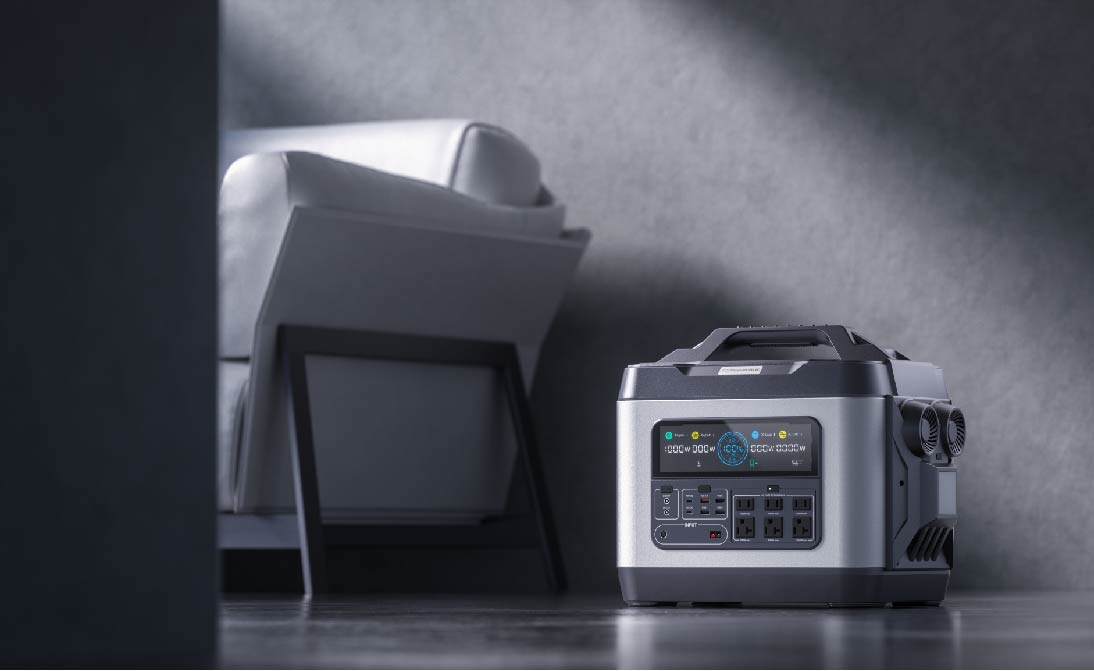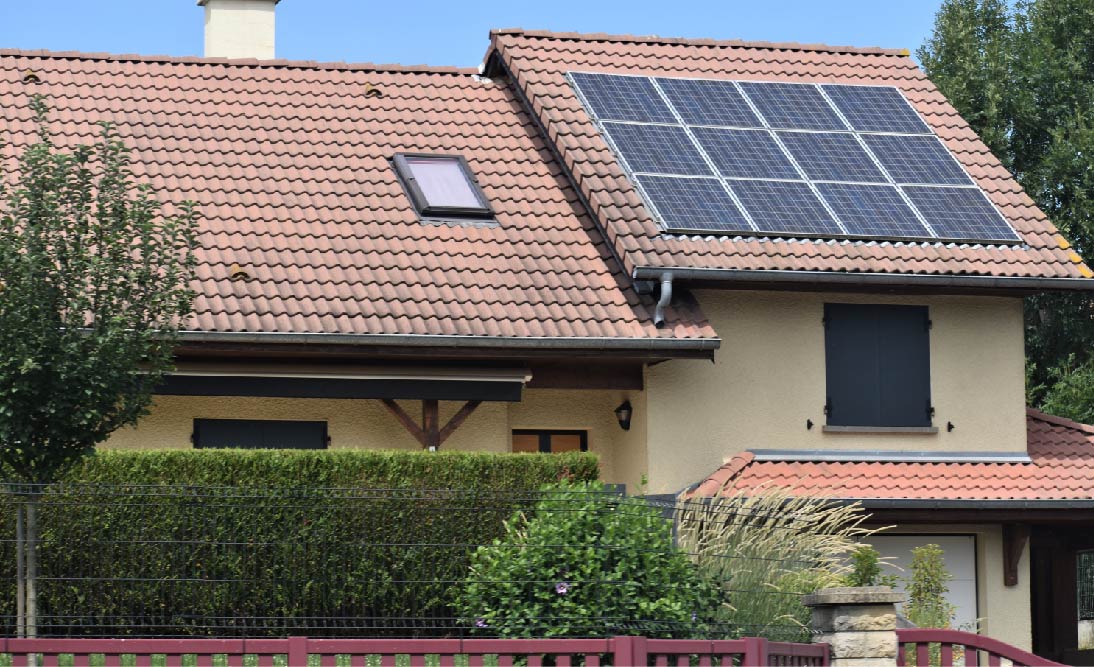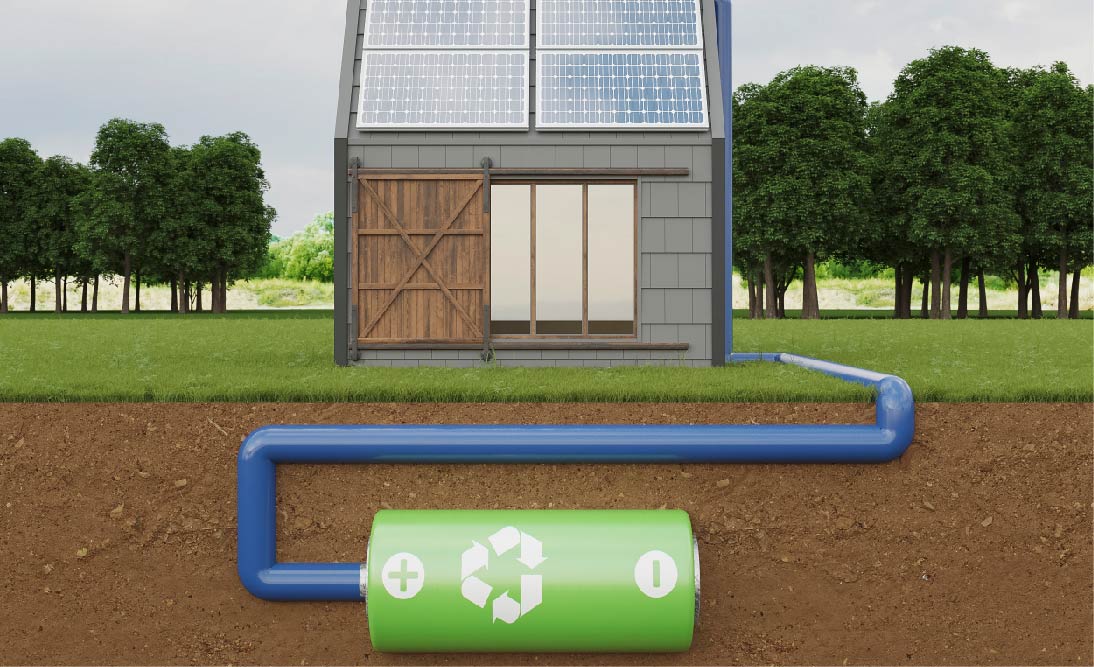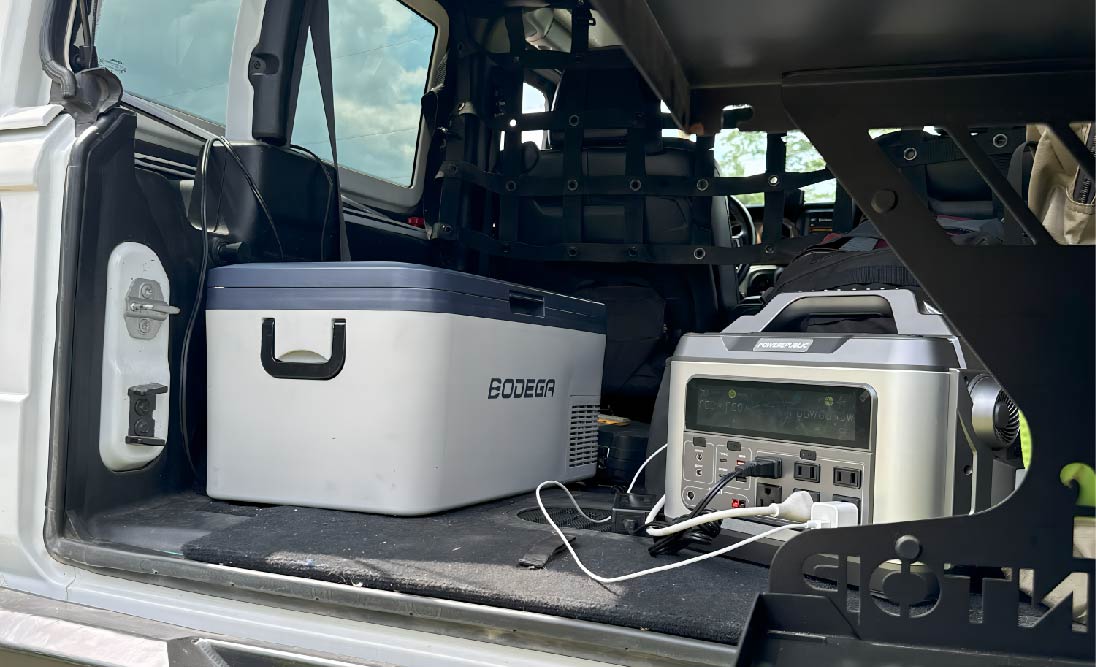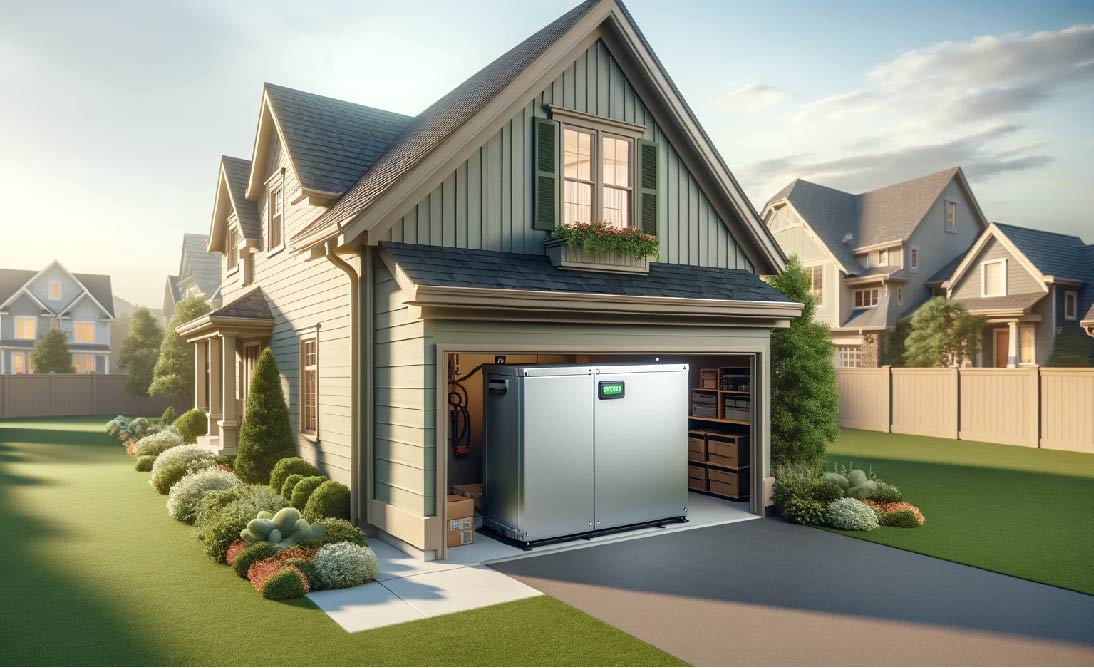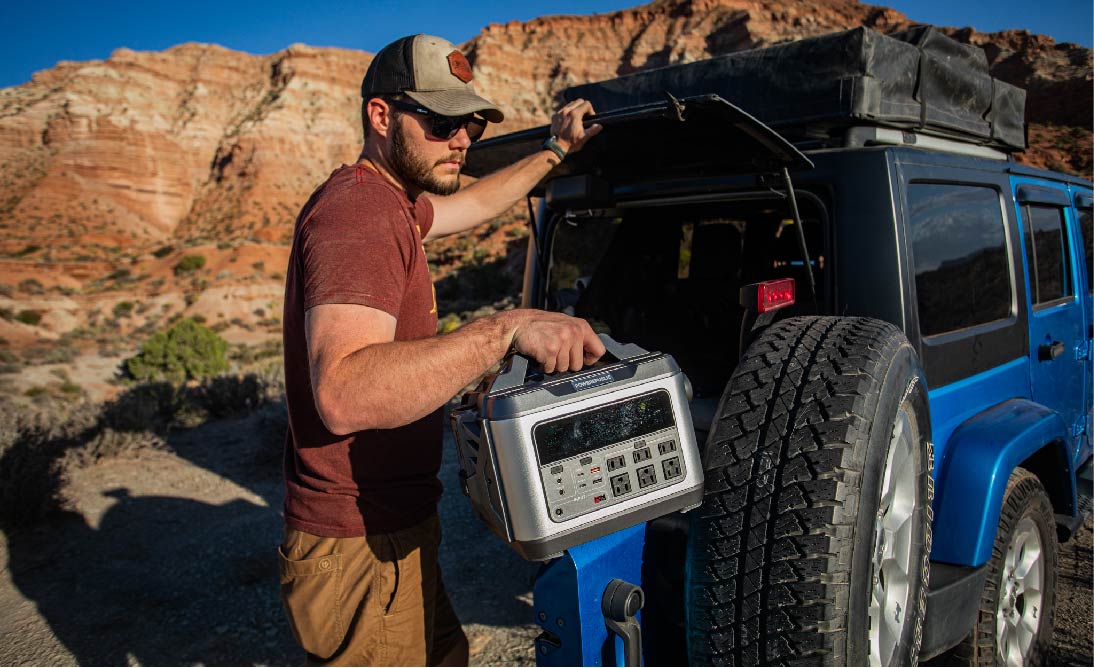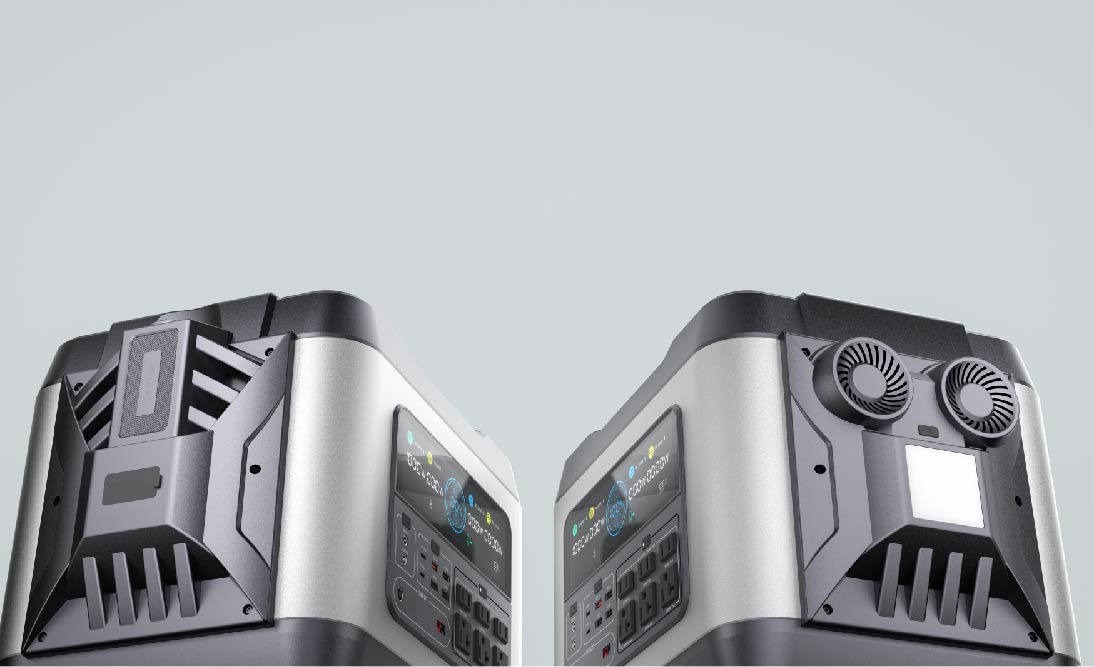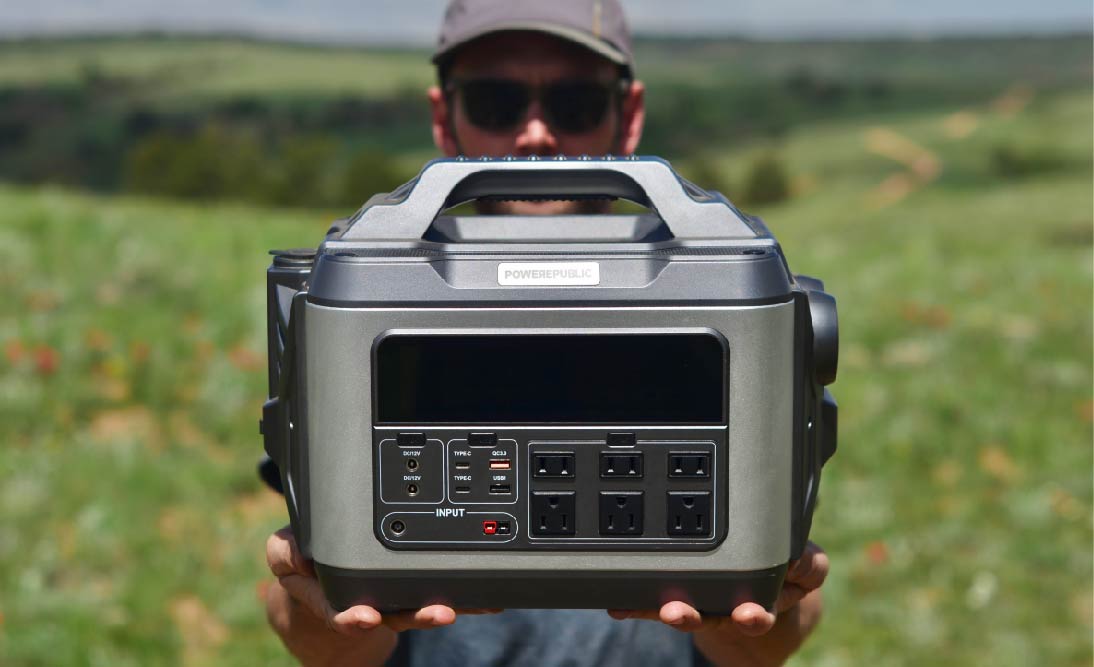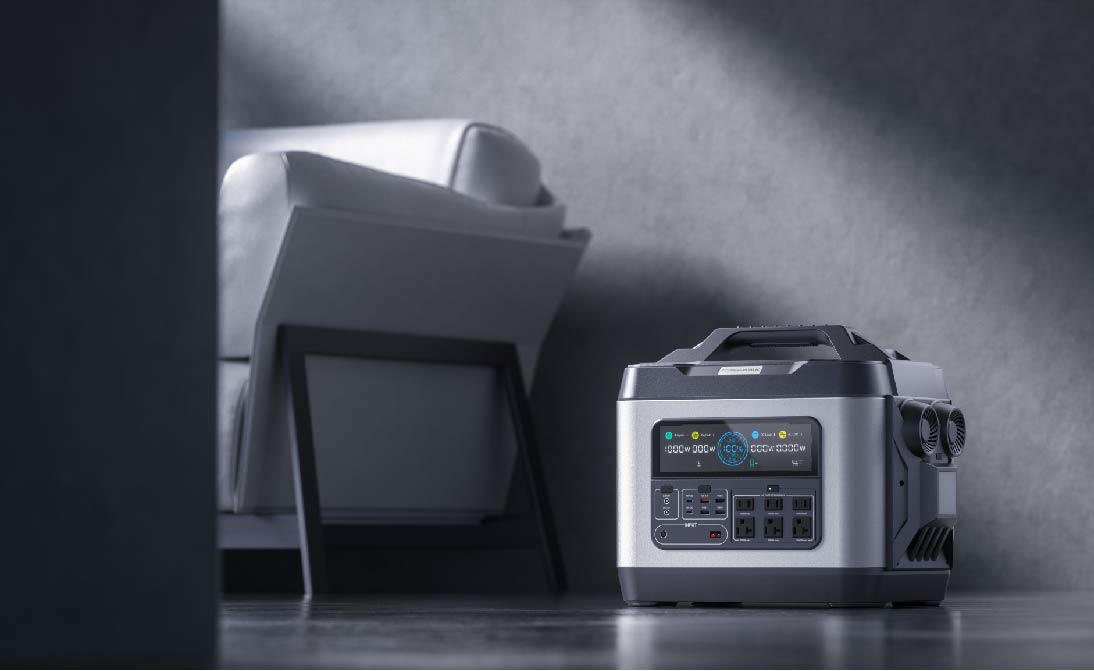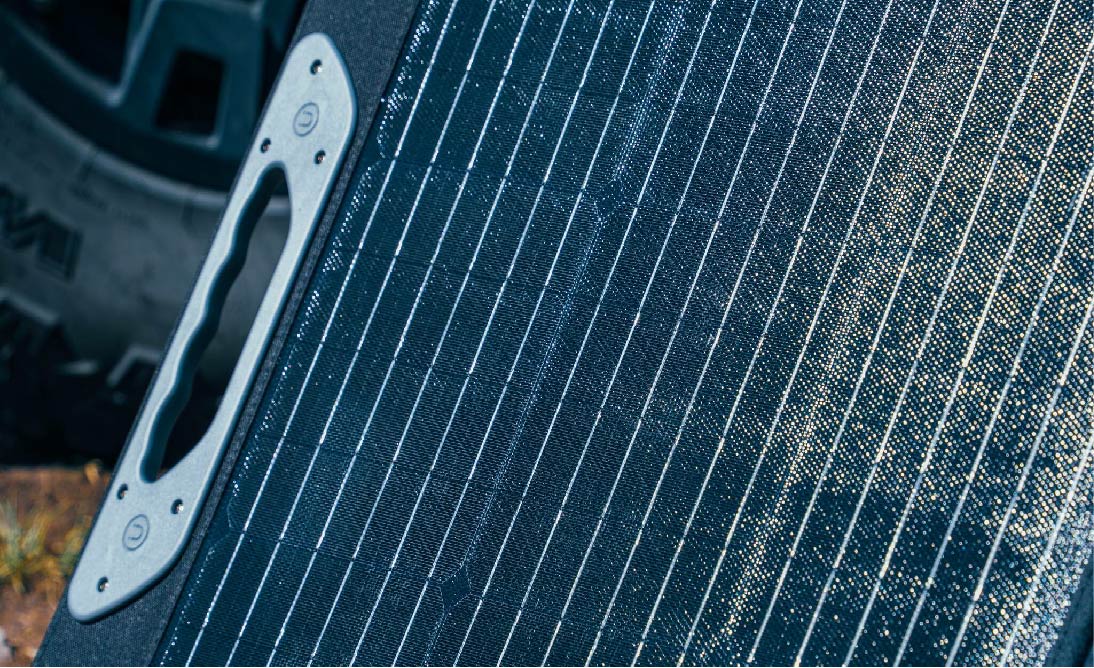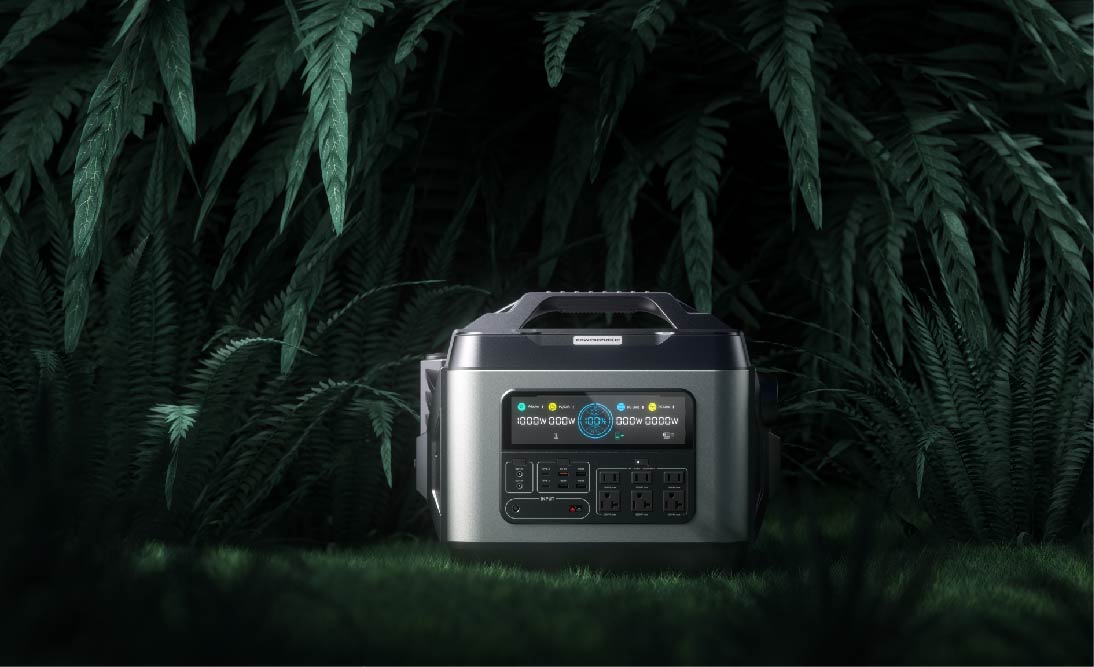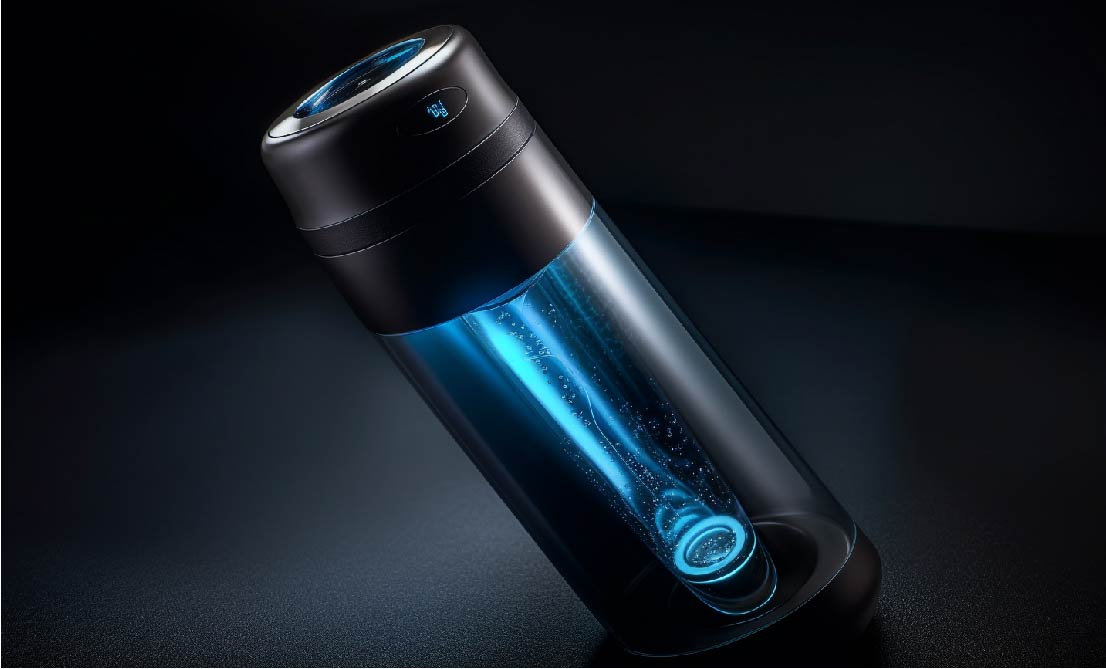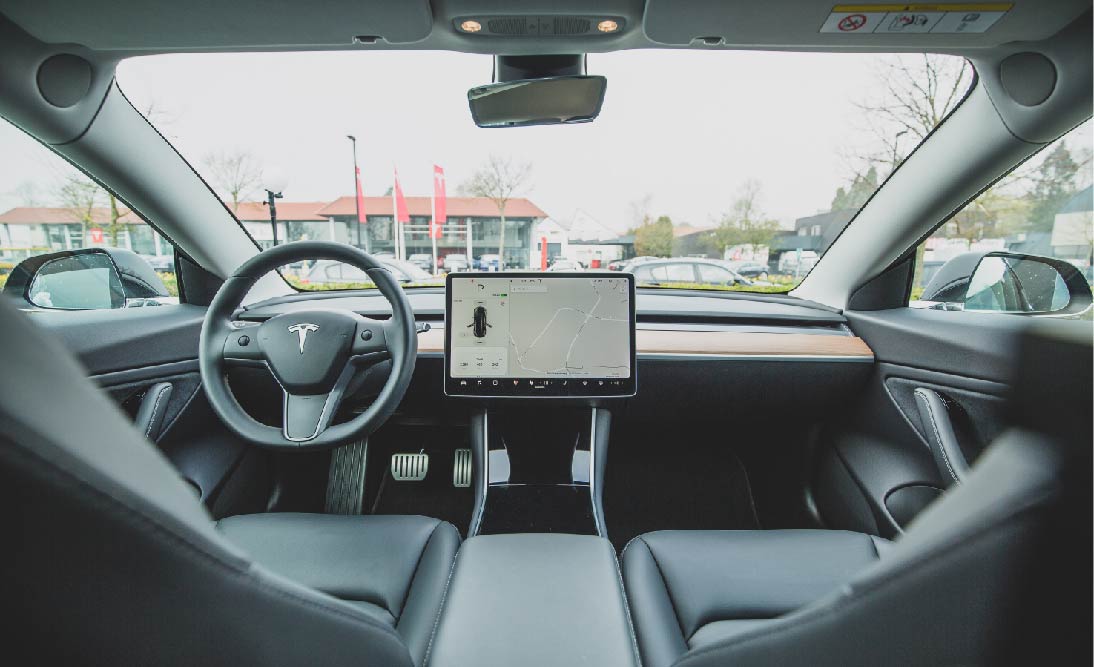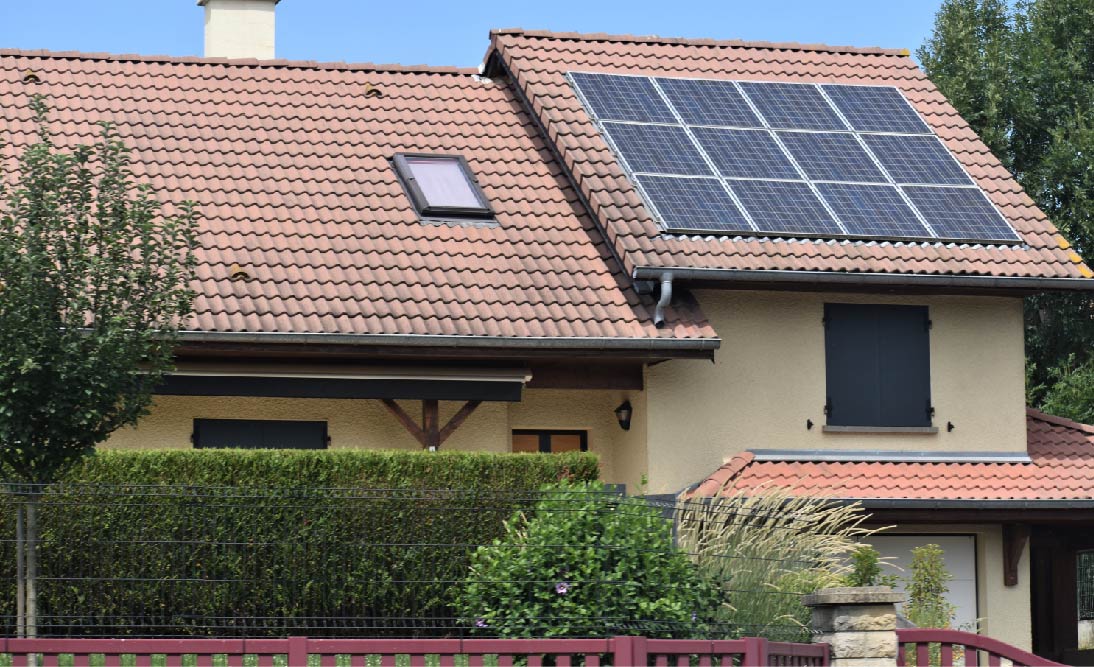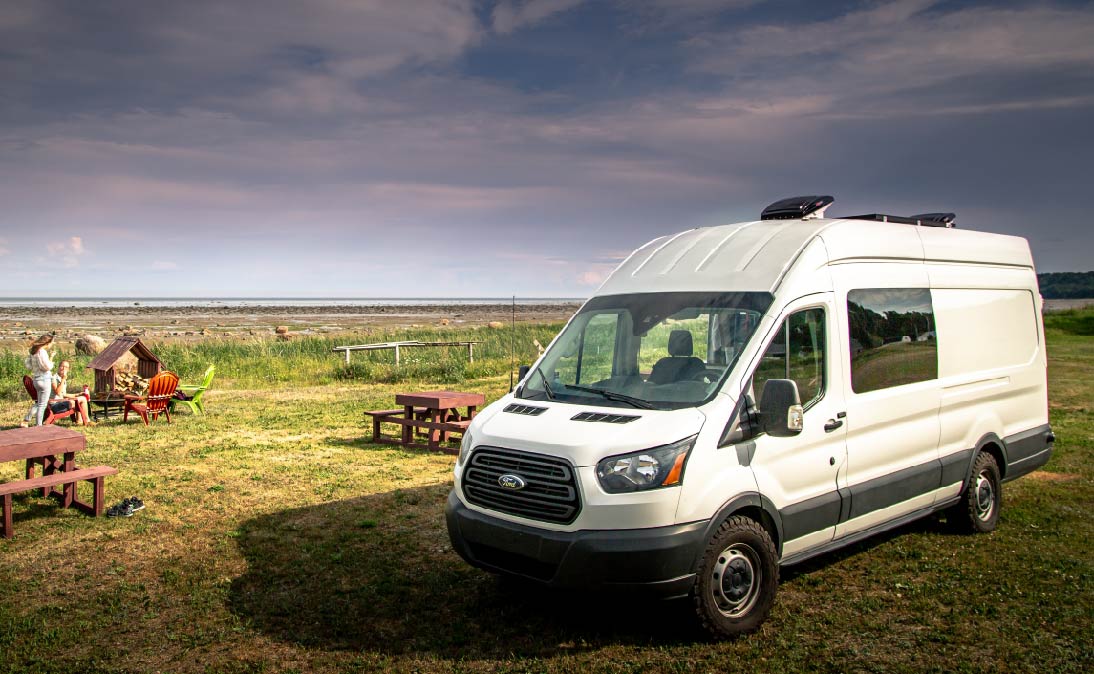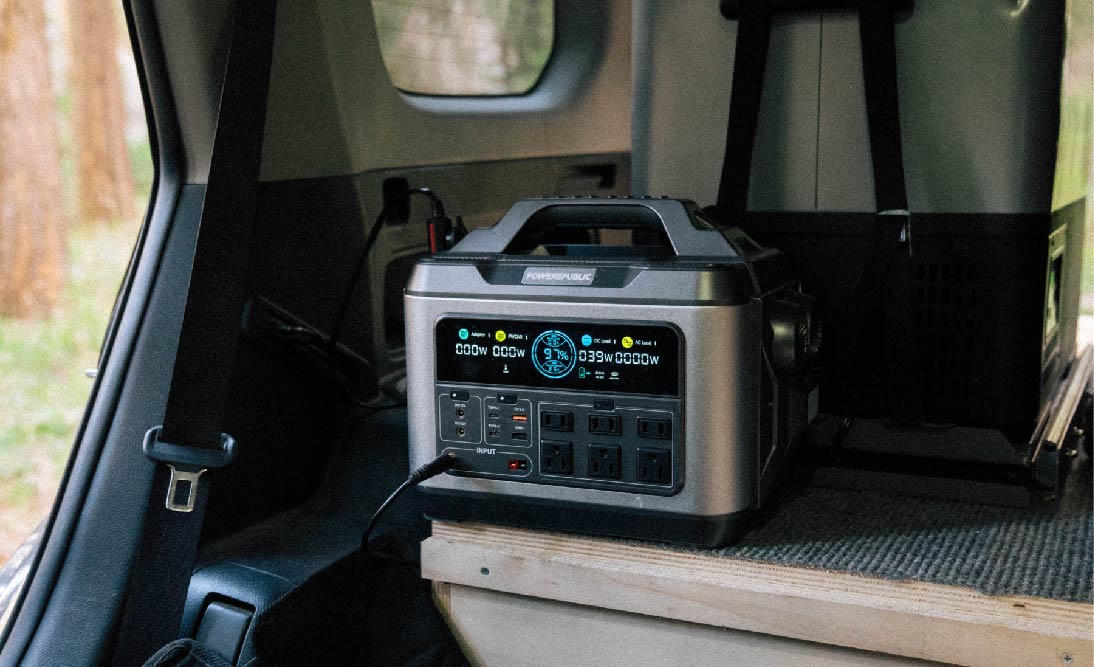Table of Contents:
-
Estimate The Lifespan: How Long Do Portable Power Stations Last?
-
How To Properly Take Good Care Of Your Portable Power Station?
-
FAQ I: Can I Use a Portable Power Station While Charging it?
Portable power stations come with a price tag, making it crucial to choose one that suits both your power requirements and budget. But before making that decision, the burning question remains: How long do portable power stations last?
We've got you covered in this blog, where we break down the factors influencing their lifespan. Discover how battery cycles and usage frequency play a role and learn practical tips on extending their life through proper care. Join us as we delve into the essentials, helping you make the most of your investment in a portable power station.
Let's jump right in!
Understanding Battery Cycles

Battery cycles play a crucial role in understanding the lifespan and performance of various batteries, including lithium-ion (Li-ion) lithium-iron phosphate (LiFePO4) batteries, and several other types. These cycles denote the quantity of full charge and discharge sequences a battery can experience before its capacity starts to diminish.
Lithium-Ion (Li-ion) Batteries
-
Commonly found in portable electronics and electric vehicles, Li-ion batteries offer a high energy density. They typically endure several hundred to over a thousand charge cycles, although their capacity gradually diminishes over time.
-
Estimated cycles: 300 to 1000 cycles
-
Commonly used in portable electronics and electric vehicles, Li-ion batteries offer a high energy density. The number of cycles can vary based on factors such as usage patterns and charging practices.
Lithium Iron Phosphate (LiFePO4) Batteries
-
Renowned for their stability and extended lifespan, LiFePO4 batteries are a durable choice. They are commonly used in applications where longevity is crucial, such as solar energy storage and electric vehicles.
-
Estimated cycles: 2000 to 7000 cycles
-
Known for their longevity and stability, LiFePO4 batteries can endure significantly more charge cycles compared to traditional Li-ion batteries. This makes them suitable for applications where extended lifespan is essential.
Nickel-Metal Hydride (NiMH) Batteries
-
Often utilized in household electronics, NiMH batteries offer a decent balance between capacity and cost. They can undergo a moderate number of charge cycles but may experience self-discharge over time.
-
Estimated cycles: 300 to 500 cycles
-
Commonly found in household electronics, NiMH batteries offer a moderate cycle life. They provide a good balance between capacity and cost.
Lead-Acid Batteries
-
Traditional and reliable, lead-acid batteries are commonly found in automotive applications and uninterruptible power supply (UPS) systems. They have a lower energy density but can endure numerous charge cycles.
-
Estimated cycles: 200 to 500 cycles
-
Traditional lead-acid batteries are robust and reliable, commonly used in automotive applications and uninterruptible power supply (UPS) systems. They have a lower energy density but can endure a substantial number of charge cycles.
Understanding the characteristics of these battery types is crucial for selecting the right power solution based on the specific needs of your devices or applications. Regular maintenance and adherence to proper charging practices can contribute significantly to maximizing the lifespan of these batteries.
Estimate The Lifespan: How Long Do Portable Power Stations Last?

The lifespan of a portable power station hinges on factors like battery cycles, charge patterns, usage frequency, and maintenance. Let’s take a look at them:
Battery Cycle
-
Portable power stations typically use lithium-ion or lithium-iron-phosphate batteries. Li-ion variants may last for 300 to 1000 charge cycles, whereas LiFePO4 versions can endure 2000 to 7000 cycles.
-
Example: A LiFePO4-based power station with 2000 cycles. If cycled once a day, it could last over 5 years (2000 cycles/365 days =5 years). You can use this formula to have a general estimation of the lifespan of a portable power station.
Charge and Recharge Patterns
-
How you charge and discharge the power station matters. Regularly charging it from low to full and avoiding deep discharges can extend its lifespan.
-
Example: Power station charged from 20% to 80% daily. A conservative estimate suggests longer life compared to a unit charged from 0% to 100%, potentially extending its lifespan by 20-30%.
Frequency of Use
-
The more frequently you use the power station, the faster it will undergo charge cycles. For occasional use, the lifespan might extend. Consider a power station used infrequently that lasts longer than a unit subjected to daily usage.
Temperature Management
-
High temperatures can accelerate battery degradation. Storing and using the power station in moderate temperatures can contribute to a longer lifespan. A power station stored in a cool environment might outlast one exposed to extreme heat.
Maintenance
-
Proper maintenance, including firmware updates and occasional full discharges, can contribute to a healthier battery. A power station with regular maintenance may outperform a neglected one.
-
Proper maintenance may contribute to an additional 5-10% lifespan extension.
The estimated lifespan of a portable power station can vary widely. For example, a well-maintained power station with LiFePO4 batteries, charged conservatively and used moderately could potentially last over a decade. However, actual lifespan depends on usage conditions and specific product characteristics, so it's essential to follow manufacturer guidelines for optimal performance and longevity.
How To Properly Take Good Care Of Your Portable Power Station?

Taking good care of your portable power station is crucial for maximizing its lifespan and ensuring reliable performance.
Here's a detailed guide:
Charge and Discharge Patterns:
-
Charge your power station judiciously to avoid stressing the battery.
-
Instead of letting it reach 0% or charging to 100% every time, maintain a moderate charge between 20% and 80% for daily use.
Temperature Control:
-
Extreme temperatures can harm the battery. Ensure your power station operates in a controlled environment.
-
Store it in a cool, dry place, avoiding exposure to direct sunlight or freezing conditions.
Avoid Extreme Conditions:
-
Protect your power station from extreme environments to maintain its components.
-
Don't use it in scorching heat or cold; refrain from leaving it in a hot car or direct sunlight.
Regular Use and Maintenance:
-
Regular use prevents battery inactivity, while maintenance ensures optimal functionality.
-
Use the power station at least once every few weeks. Follow manufacturer guidelines for updates and occasionally discharge it fully.
Proper Charging Practices:
-
Use the correct charger to prevent overcharging and stress on the battery.
-
Always use the provided charger and avoid leaving the power station plugged in excessively.
Protect Against Overcharging and Over-Discharging:
-
Leverage built-in protection features to avoid irreversible damage.
-
Utilize the power station's built-in safeguards and unplug it once fully charged to prevent overcharging.
Store with Care:
-
Proper storage can prevent capacity loss during extended periods of inactivity.
-
If storing for a long time, maintain a partial state of charge, around 50%, to preserve battery health.
Handle with Caution:
-
Physical damage can compromise internal components and overall performance.
-
Handle the power station with care, avoiding drops or undue stress.
By following these practices, you can ensure your portable power station remains reliable and efficient throughout its lifespan.
FAQ I: Can I Use a Portable Power Station While Charging it?

Yes, in most cases, you can use a portable power station while it is charging. These versatile devices are designed to provide power to your devices even when they are actively charging. However, there are a few considerations to keep in mind:
-
Charging Speed: The power station's output may be shared between powering your devices and recharging the internal battery. This might slightly impact the charging speed, so it's essential to check the specifications of your power station for details on simultaneous use.
-
Power Station Specifications: Some power stations may have specific modes or features related to simultaneous use and charging. Refer to the user manual or product documentation to understand any limitations or recommendations provided by the manufacturer.
-
Charging Source: The source you're using to charge the power station matters. If you're relying on solar panels, for example, the charging rate might be slower compared to a wall outlet or a car adapter.
Example: Imagine you're on a camping trip, and your portable power station is running low on battery. While enjoying the outdoors, you can still power your electronic devices using the power station. As you continue using it, you decide to connect it to a solar panel to harness energy from the sun and simultaneously charge the internal battery. This way, you maintain a continuous power supply for your devices while replenishing the power station's energy reserves. Always check the user manual for any specific guidelines related to simultaneous use and charging for your particular power station model.
FAQ II: How Long Do Solar Panels Last?

We all know that portable power stations can be paired with solar panels to become solar generator kits. The lifespan of solar panels varies based on the type of technology used. Here are the typical lifespans for different types of solar panels:
Monocrystalline Solar Panels:
-
Lifespan: 25 to 30 years
-
Explanation: Monocrystalline panels are known for their efficiency and durability. With proper maintenance and care, they can last for several decades.
Polycrystalline Solar Panels:
-
Lifespan: 20 to 25 years
-
Explanation: Polycrystalline panels are slightly less efficient than monocrystalline ones but still offer a respectable lifespan. Regular maintenance contributes to their longevity.
Thin-Film Solar Panels:
-
Lifespan: 10 to 20 years
-
Explanation: Thin-film panels are generally less durable than crystalline panels. While they have a lower cost, they may degrade faster over time.
Amorphous Silicon (a-Si) Solar Panels:
-
Lifespan: 15 to 25 years
-
Explanation: Amorphous silicon panels fall under thin-film technology. Their lifespan is influenced by the quality of materials and manufacturing processes.
Cadmium Telluride (CdTe) Solar Panels:
-
Lifespan: 20 to 25 years
-
Explanation: CdTe panels have gained popularity for their efficiency and relatively lower cost. They offer a lifespan similar to polycrystalline panels.
It's important to note that these are general estimates, and the actual lifespan can be influenced by factors such as environmental conditions, maintenance, and the quality of the solar panels and installation. Regular cleaning, monitoring, and adherence to manufacturer guidelines contribute to maximizing the longevity of solar panels. Additionally, many solar panel manufacturers provide warranties ranging from 20 to 25 years, offering assurance of a certain level of performance over the specified period.
Final Thoughts
Understanding the lifespan of a portable power station before purchase is the key to optimizing your investment. How long do portable power stations last? The answer lies in the intricacies of battery types, cycles, charging patterns, environmental factors, and diligent maintenance.
Empowerment over your power station's longevity rests in your hands. Through careful consideration and responsible upkeep, it has the potential to deliver reliable energy for well over a decade. So, pondering on the question, how long do portable power stations last? With informed choices and mindful practices, they evolve into enduring power solutions, standing the test of time for years to come.









